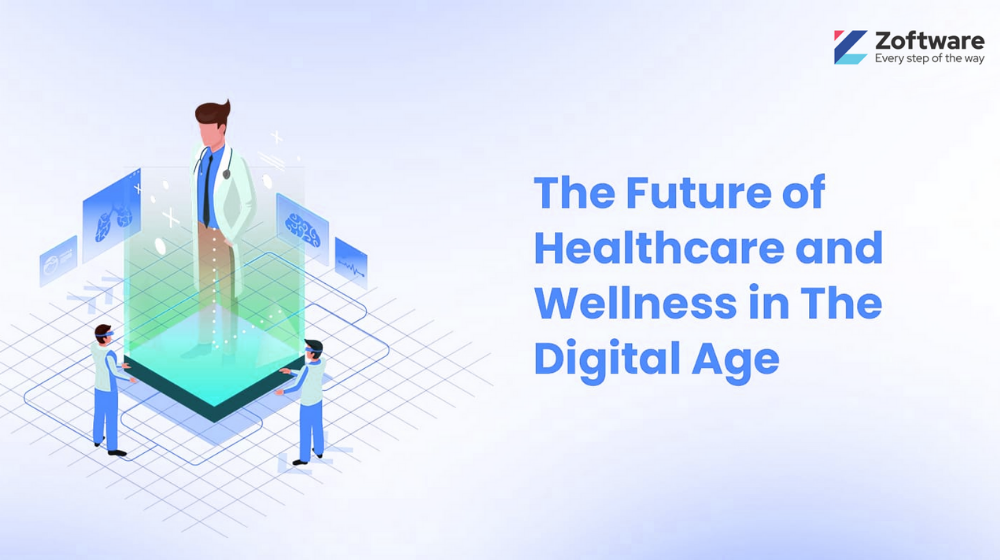Healthcare encompasses many services and practices to maintain or improve people’s health. It includes preventing, diagnosing, treating, and managing illnesses, injuries, and other physical and mental impairments.
Healthcare and wellness providers, such as doctors, nurses, and therapists, offer these services in various settings, including hospitals, clinics, and private practices. The goal is to achieve optimal health outcomes for individuals and communities through professional medical care.
Understanding Healthcare and Wellness
Healthcare is the organized provision of medical care to individuals or a community. Its primary goal is maintaining or improving health, preventing illness, and treating the sick or injured.
Healthcare and Wellness: Definition and Importance
Healthcare encompasses a range of services to promote health, prevent disease, diagnose and treat illness, and preserve mental and physical well-being.
Healthcare Systems Globally
Various healthcare systems worldwide are characterized by their own policies, regulations, and funding mechanisms.
- Publicly Funded: These systems are financed through taxes and typically offer citizens free or subsidized healthcare services. For example, the United Kingdom’s National Health Service (NHS) provides largely free healthcare for residents at the point of use.
- Privately Funded: In contrast, private healthcare requires individuals to pay for services out-of-pocket or through health insurance. The United States healthcare system is an example, with many healthcare services funded through private insurance.
- Mixed Systems: Many countries operate a hybrid system combining elements of both, offering citizens a balance between publicly funded and private services.
Types of Healthcare and Wellness Services
Healthcare services can be broadly classified into the following categories:
- Primary Care: The first point of contact for patients, often provided by general practitioners, family physicians, or community health clinics.
- Examples include routine checkups, health screenings, and immunizations.
- Secondary Care: Specialty care clinicians focus on a specific disease or body system.
- Examples: Cardiologists, orthopedic surgeons, and pediatricians.
- Tertiary Care: More complex and advanced medical care and procedures, often requiring specialized equipment and expertise.
- Examples: Neurosurgery, cancer treatment, and burns units.
By understanding these vital aspects of healthcare, individuals can navigate the sometimes complex world of medical services and make informed decisions about their care.
Dimensions of Wellness
Wellness comprises several dimensions, each significant to an individual’s holistic well-being:
- Physical Wellness: Involves maintaining a healthy body and seeking care when needed.
- Emotional Wellness: Emphasizes the awareness, understanding, and acceptance of one’s feelings.
- Intellectual Wellness: Encourages creative and stimulating mental activities.
- Spiritual Wellness: Involves seeking meaning and purpose in human existence.
The Role of Wellness in Society
Wellness plays a pivotal role in society by:
- Improving Quality of Life: Enabling people to live more balanced and fulfilled lives.
- Reduction of Healthcare Costs: Promoting preventative health measures can lower the burden on healthcare systems.
- Social Wellness: The ability to establish and maintain positive relationships.
- Environmental Wellness: Recognizes the responsibility to balance personal health with environmental sustainability.
The Interconnection of Healthcare and Wellness
Healthcare and wellness are deeply intertwined, each contributing to an individual’s health and well-being. Effective healthcare often incorporates wellness strategies, while wellness approaches can inform and enhance healthcare practices.
Preventive Healthcare
Preventive healthcare involves preventing diseases rather than treating them after they occur.
This includes:
- Vaccinations: To protect against disease.
- Regular screenings: For early detection of conditions like cancer or diabetes.
Such preventive measures are designed to maintain wellness and reduce the need for medical interventions.
Holistic Healthcare and Wellness Approaches
Holistic health approaches consider the entire person rather than focusing on isolated symptoms or illnesses.
Key components include:
- Nutrition: Emphasizing a balanced diet for optimal health.
- Exercise: Regular physical activity is necessary to maintain physical and mental health.
These approaches promote wellness by addressing various aspects of a person’s lifestyle and environment, which can prevent the onset of illness and enhance healthcare outcomes.
Healthcare and Wellness Providers
Healthcare providers are essential to the healthcare system and are responsible for delivering services to maintain or improve health.
Primary Care Physicians
Primary Care Physicians (PCPs) are the first point of contact for individuals seeking medical attention. They provide general healthcare services that span essential diagnosis, preventive care, and treatment of common illnesses.
Healthcare and Wellness Providers Manage:
- Chronic conditions like diabetes and hypertension
- Routine health screenings
- Vaccinations
- Health advice and education
Specialists and Allied Healthcare and Wellness Professionals
While PCPs offer broad healthcare and wellness services, specialists focus on specific fields of medicine, such as cardiology or dermatology, providing targeted care. Allied Health Professionals offers various health services contributing to diagnosis, recovery, and quality of life.
Examples include:
- Physiotherapists: Rehabilitation and recovery support
- Radiologists: Diagnostic imaging interpretation
- Nutritionists: Dietary and nutritional guidance
Technological Advances in Healthcare
Technological innovation is critical in the evolution of healthcare delivery and management. These advancements are transforming patient care, efficiency, and outcomes.
Telemedicine
Telemedicine leverages digital information and communication technologies to provide and support healthcare when distance separates participants.
It enables remote diagnosis, treatment, and monitoring of patients and includes services such as video consultations with healthcare providers. The COVID-19 pandemic significantly accelerated its adoption, showcasing its potency in maintaining continuous patient care while minimizing physical contact.
Electronic Health Records
Electronic Health Records (EHRs) are digital versions of patients’ paper charts. EHRs are real-time, patient-centered records that make information available instantly and securely to authorized users.
They contain a patient’s medical history, diagnoses, medications, treatment plans, immunization dates, allergies, radiology images, and laboratory and test results.
Medical Wearables
Medical wearables are electronic devices that consumers can wear, like Fitbits and smartwatches, which collect data on personal health and exercise.
These devices have advanced sensors to monitor health metrics such as heart rate, blood pressure, and oxygen levels. Their increasing accuracy and sophistication allow for early detection of potential health issues and a more personalized approach to healthcare.
Challenges in the Healthcare and Wellness Sector
The healthcare and wellness sector faces numerous challenges that impact service delivery and patient outcomes. These include accessibility, affordability, and the complex landscape of ethical and legal obligations.
Accessibility and Affordability
Accessibility often refers to the ease with which individuals can obtain healthcare and wellness services. A significant challenge is that healthcare is not equally accessible in different regions.
- Rural vs. Urban Accessibility:
- Rural: Limited providers, transport issues, fewer specialized services.
- Urban: High demand, crowded facilities, stretched resources.
Affordability, on the other hand, pertains to individuals’ ability to pay for healthcare services. Despite insurance coverage, medical procedures, prescription drugs, and health plans can be expensive for many. Out-of-pocket expenses can lead to a financial strain, with the worst-case scenario being that individuals forgo necessary treatments due to cost.
- Affordability Issues:
- Insurance coverage does not always equate to affordable care.
- High out-of-pocket costs can deter individuals from seeking necessary treatments.
Ethical and Legal Considerations
Healthcare providers often grapple with ethical challenges. These may involve decisions regarding patient autonomy, end-of-life care, and prioritization of limited resources.
- Ethical Challenges:
- Patient autonomy vs. medical advisability.
- Distribution of limited resources among patients.
From maintaining patient confidentiality under HIPAA to adhering to evolving healthcare policies, the legal aspects of healthcare are complex and have far-reaching implications for both patients and providers.
- Legal Considerations:
- Compliance with HIPAA for patient privacy.
- Navigating malpractice laws and regulations.
Trends in Wellness
In the realm of wellness, personalized health and wellness tourism have emerged as key trends that cater to individual needs and a growing desire for holistic well-being experiences.
Personalized Health
Personalized health transforms the healthcare and wellness industry by leveraging data-driven approaches to tailor health and fitness plans. Genetic testing and AI-driven applications aid in creating highly individualized nutrition and exercise regimens, making wellness more efficient and effective.
- Custom Nutrition Plans: Based on genetic markers, individuals can receive nutrition advice tailored to their body’s specific needs, including potential food sensitivities and optimal nutrient intake.
- AI Fitness Coaches: Sophisticated algorithms analyze fitness levels and goals to curate personalized workout schedules, with real-time adjustments as progress is made.
Wellness Tourism
Tourism is rising, with travelers seeking destinations offering rejuvenating experiences for both the body and mind. This trend signifies a shift towards intentional travel that prioritizes health and well-being.
- Holistic Retreats: Destinations that offer yoga, meditation, and spa treatments. This promotes mental and physical relaxation.
- Adventure and Nature Therapy: Incorporation of outdoor activities like hiking and forest bathing, which have been shown to reduce stress and improve mental health.
Policy and Regulation
In the context of healthcare and wellness, policy and regulation encompass the laws and standards that govern practices, safety, and the delivery of services.
Healthcare Laws
Healthcare laws are a critical framework designed to protect patients’ rights and ensure the delivery of safe, high-quality healthcare services.
Healthcare Laws:
- HIPAA: Enforces the privacy and security of health information.
- ACA: Expands access to insurance and protects patient rights.
International Health Regulations
International Health Regulations (IHR) are global rules set by the World Health Organization to manage public health risks and contain the international spread of disease. These regulations are legally binding for 194 member countries.
Cover aspects:
- Reporting public health events.
- Responding to health emergencies.
Countries are expected to develop and strengthen their public health capabilities following IHR requirements, including surveillance, reporting, and response capacities.
Wellness Industry Standards
Wellness industry standards are non-medical guidelines that aim to ensure consumer safety and service quality within the wellness market. Trade associations like the International Spa Association (ISPA) for wellness spas guide businesses in providing high-caliber services and facilities.
Key components include:
- Service Delivery: Clear, ethical, and professional delivery of wellness services.
- Facility Management: Clean, safe, and functional wellness facilities are maintained.
Future Directions in Healthcare and Wellness
The healthcare and wellness industry is poised for transformative changes with advancements in medical technology and a growing emphasis on holistic health practices.
Innovations in Medicine
Innovations are rapidly changing the landscape of healthcare and wellness treatment options. Robotics and AI lead to more precise surgical procedures and personalized care plans. For example, robot-assisted surgery allows for less invasive operations with faster recovery times.
Gene editing technologies like CRISPR can potentially correct genetic disorders before birth. Clinical trials are ongoing and represent a significant leap forward in preventative medicine.
Integrative Health Perspectives
The integration of traditional and modern healthcare philosophies is expanding. Practices such as acupuncture and yoga are increasingly recognized for their benefits and are being incorporated into conventional treatment plans.
Mental health is receiving greater attention as part of integrative wellness. There is an emphasis on the need for mental health services to be readily accessible as a standard component of primary healthcare.
Conclusion
Healthcare and wellness encompass multifaceted dimensions of human well-being, ranging from preventive measures to therapeutic interventions. Individuals can strive towards optimal wellness through a holistic approach that integrates physical, mental, and social aspects of health.
As we navigate the complexities of modern healthcare and wellness systems, let us remain committed to promoting holistic well-being and fostering a culture of compassion, empathy, and inclusivity in all aspects of healthcare delivery.
The market is filled with different software and tools for enhancing productivity and efficiency in the healthcare sector. With Zoftware, you can choose the right one for you and your profession.
Sign up now at Zoftware to find the perfect software solution for you.





